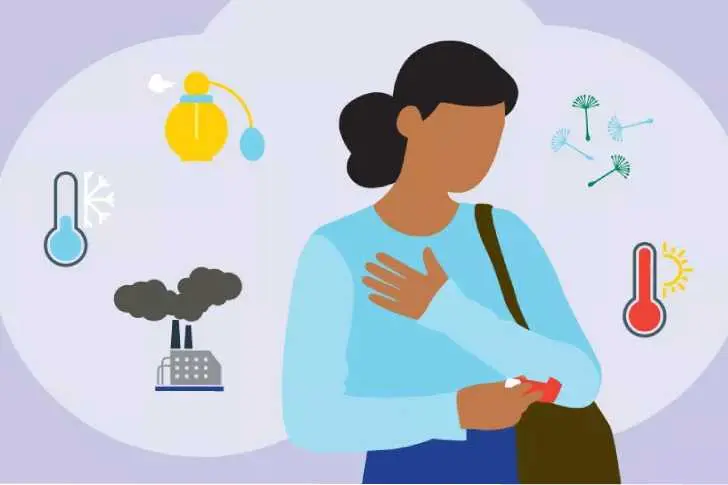
What is COPD and How Do Inhalers Help?
COPD is a disease that causes airflow obstruction, making it difficult to breathe. The disease is often caused by long-term exposure to harmful substances like tobacco smoke. The symptoms include breathlessness, chronic coughing, and excess mucus production. Inhalers help manage COPD by delivering medications directly into the lungs, where they work to open the airways and reduce inflammation.
There are two main types of COPD inhalers:
- Short-acting bronchodilators: These provide quick relief by opening up the airways for a short period.
- Long-acting bronchodilators: These help maintain open airways over a longer duration, providing sustained relief.
Some inhalers also combine both bronchodilators and anti-inflammatory medications to offer a comprehensive treatment approach.
New Treatments and Therapies for COPD
Recent advancements in medical research have led to the development of new COPD treatments. One of the significant improvements is the advent of combination therapies. These treatments combine multiple medications into a single inhaler, making it easier for patients to manage their condition and adhere to their treatment plans.
Biologic therapies are also an exciting development in COPD treatment. These newer drugs target specific inflammatory pathways in the lungs and are particularly useful for patients with severe or frequent exacerbations. Monoclonal antibodies are one type of biologic therapy that has shown promising results in managing COPD by reducing inflammation.
Another important advancement is the triple therapy inhaler, which combines three medications into one inhaler. This combination typically includes a long-acting muscarinic antagonist (LAMA), a long-acting beta-agonist (LABA), and a corticosteroid. The use of a triple therapy inhaler has been proven to reduce COPD flare-ups and improve lung function.
What is the Number One Inhaler for COPD?
There isn’t a single number one inhaler for COPD because treatment effectiveness varies based on the individual’s symptoms and severity of the disease. However, some of the most commonly prescribed and effective inhalers include:
- Spiriva (Tiotropium): A long-acting muscarinic antagonist (LAMA), Spiriva helps reduce symptoms and prevent exacerbations. It is one of the most frequently prescribed inhalers for COPD and is known for its effectiveness in maintaining open airways.
- Breo Ellipta (Fluticasone/Vilanterol): A combination inhaler containing a steroid (fluticasone) and a long-acting beta-agonist (vilanterol), Breo Ellipta helps reduce inflammation and keep the airways open for longer periods. It’s especially useful for people with moderate to severe COPD.
- Anoro Ellipta (Umeclidinium/Vilanterol): Another combination inhaler, Anoro Ellipta contains two long-acting bronchodilators and works to keep the airways open. It’s typically used to manage more severe COPD cases.
While these are some of the most popular inhalers, the best inhaler for a patient depends on their specific symptoms, response to treatment, and any underlying health conditions.
Asthma Inhalers vs. COPD Inhalers
While asthma inhalers and COPD inhalers both aim to help open the airways, they are used for different purposes. Asthma is primarily an inflammatory disease, while COPD is a progressive condition that causes irreversible airflow limitation.
Asthma inhalers often include corticosteroids to reduce inflammation and prevent attacks, while COPD inhalers focus more on bronchodilation (opening the airways) and maintaining airflow. However, there are some overlapping treatments, such as combination inhalers, which can be effective for both conditions, particularly when asthma and COPD coexist, a condition known as ACOS (Asthma-COPD Overlap Syndrome).
Best COPD Medication and Treatment for Seniors
COPD treatment in seniors requires careful consideration, as older patients may have other comorbidities or may struggle with medication adherence. For seniors, simple-to-use inhalers are essential. Some of the most effective COPD medications for seniors include:
- Spiriva Respimat (Tiotropium): This inhaler is easy to use and offers long-acting relief. It helps open the airways and reduce flare-ups, which is particularly important for older patients who are more vulnerable to exacerbations.
- Trelegy Ellipta (Fluticasone/Umeclidinium/Vilanterol): This triple therapy inhaler combines three medications to provide a comprehensive approach to managing COPD. It’s convenient for seniors who require multiple medications but have difficulty managing multiple inhalers.
- Breo Ellipta (Fluticasone/Vilanterol): For seniors who need both a bronchodilator and an anti-inflammatory medication, Breo Ellipta provides effective relief with just one inhaler per day.
Older adults with COPD may also benefit from nebulizer treatments, which involve inhaling medications in a mist form. These treatments are especially useful for those who have difficulty using inhalers correctly.
Comparison Chart: COPD Inhalers
| Inhaler | Type of Medication | Duration of Action | Primary Use |
|---|---|---|---|
| Spiriva (Tiotropium) | LAMA (Long-acting muscarinic antagonist) | 24 hours | Maintenance treatment, symptom control |
| Breo Ellipta (Fluticasone/Vilanterol) | LABA (long-acting beta-agonist) + corticosteroid | 24 hours | Long-term symptom control and inflammation reduction |
| Anoro Ellipta (Umeclidinium/Vilanterol) | LAMA + LABA | 24 hours | Open airways, reduce exacerbations |
| Trelegy Ellipta (Fluticasone/Umeclidinium/Vilanterol) | Triple therapy (LAMA + LABA + corticosteroid) | 24 hours | Comprehensive management for severe COPD |
Conclusion
Choosing the right COPD inhaler is critical to managing the disease effectively. With new COPD treatments and innovative combination therapies, patients have more options than ever before. Inhalers like Spiriva, Breo Ellipta, and Trelegy Ellipta have proven to be highly effective in managing COPD symptoms and reducing exacerbations.
When considering treatment options for seniors, it’s important to choose COPD medications that are easy to use and offer long-lasting relief. As always, patients should consult with their healthcare provider to determine the best treatment plan based on their individual needs and condition severity.
By staying informed about the latest COPD therapies and following a personalized treatment regimen, patients can better manage their condition and improve their quality of life.








